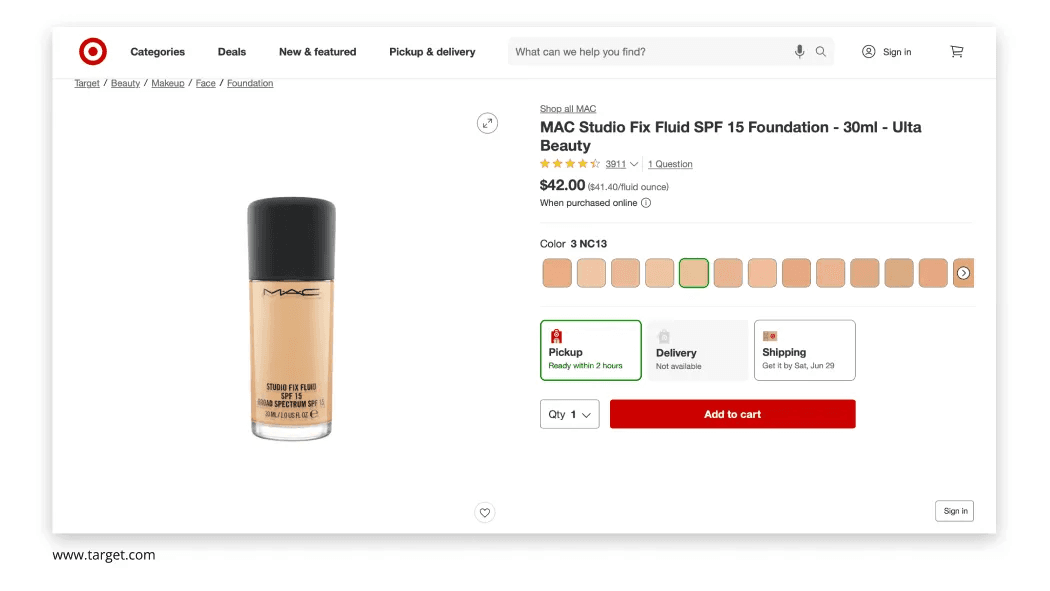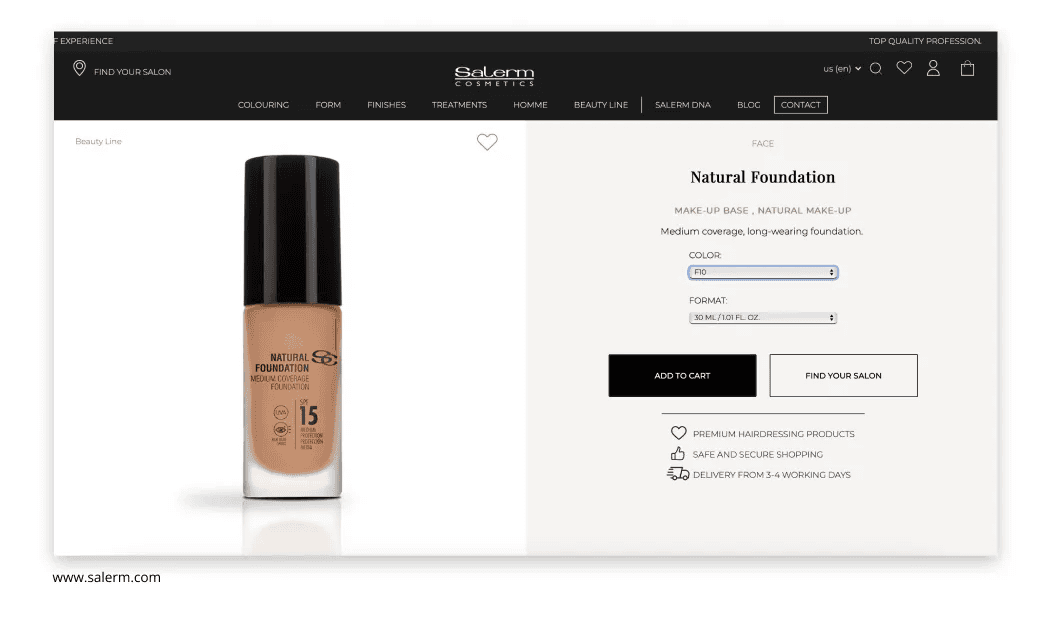5 Beautiful UX Tips for DTC Beauty Brands
The beauty industry holds a special place in my heart. It’s where I’ve gotten a significant chunk of my career experience from! I loved finding solutions for customers who use makeup and skincare to solve their own concerns and that also inspires them to feel good in their skin! As the Director of Digital Design for a large DTC cosmetic brand in NYC, I previously oversaw the digital creative and UX for 5 makeup and skincare brands — each one having very specific challenges to solve for!
I came away with many impactful digital practices, specifically for e-commerce beauty brands that proved successful through trial, testing and implementation. Along with this experience, many of the below are also validated with Baymard Institute’s detailed and comprehensive UX research. Here are a few of my favorites!
1. Include a Range of Products on the Homepage
Without a retail experience in stores like Ulta or Sephora, many beauty brands have to rely only on the experience of a website to introduce and sell their products. A big problem? Customers can’t immediately see the range of what your brand offers!
While not everyone will reach your brand through the homepage, the homepage is your chance for people interested in browsing to get an overview of your products.
Baymard Institute recommends at least “a minimum of 40% of product types displayed on the homepage to give users an overall sense of the site’s product range.”
In my experience, this can include main or popular product categories and even bestselling products. In this homepage I designed for Julep Beauty, these sections feature both popular categories as well as a variety of product types and finishes for the top franchise Eyeshadow 101.

2. Include Product Collections, Filters and Search Capabilities Surrounding “Symptom-Solution”
Other than just loving the art of skincare and makeup, many people use it to solve a problem and find a solution. Looking for full coverage makeup? Want a dewy finish instead? Have Dry skin? Rosacea? Discoloration? Acne? Eczema? There are products out there for everyone that can make people heal and feel their best.
If your products solve a problem or provide an outcome for your customers, allowing them to product find using specific collections, filters and search can further increase your product visibility! Many customers know exactly what issue they want to address or product feature they want.
Search is an especially overlooked area for this solution. Some customers go straight to the search bar if they know what they are looking for! Include products in your search results that fit certain symptom keywords, especially ones that are searched often.
Baymard Institute notes, including a “‘Symptom’ search resembles a store salesman with domain knowledge who can help customers find products simply from a description of the problem they are experiencing.”
Beauty brand Laura Geller includes a navigation scope that includes collections for common customer complaints.

3. Showcase Models Using Product and Use Cases
Ever shop for beauty products online and see just a plain shot of the product on white — and that’s it? Check out this Target example:

Beauty is an incredibly personal purchase. Your imagery should also reflect this! Showing real models, real skin, real texture, true diversity and more builds trust and makes your product “feel” real. This is especially important for DTC brands. Take this example I designed for Cover FX for it’s relaunch in 2023:

Upon selecting each shade, customers get to see real humans, before and afters of the products results as well as shade finding solutions.
Compared to the Target example, customers have a chance to connect with the product on a human level. This immediately creates trust and more confidence in the product — especially if they see a model just like them!
Baymard Institute says, “With cosmetics in particular, key qualities such as opacity or sheerness, shine, and finish can appear vastly different when worn versus depicted in a swatch or in the packaging. Without the context of a human model, some users may be skeptical that the color depicted by the swatch will be true to the actual product — especially how the color will look on their particular skin tone.”
4. Include Color Swatches on Product Pages — Especially for Color Products!
A common way to display shades on many beauty product pages are drop down menus. Color variations are hidden behind this element and it is often overlooked! These can be an issue not only on desktop, but especially on mobile. If the product has multiple shades, scrolling through a dropdown within a scrollable window can be a frustrating experience!
Take this example: can you easily know how many shades this has upon first glance?

Displaying swatches can give your customers the full overview of all the shades your product offers, allowing them to click through and start determining which shade fits them best! Seeing them all together keeps comparisons simple too.
“When selecting color, many users have become accustomed to seeing color variations exposed on the product page as swatches — in fact, 80% of desktop sites that have color variations available for some products provide users with color swatches to select among various product colors. Thus, a potentially sizable subgroup of users, expecting to see colors presented as swatches, is especially prone to overlook colors presented with other implementations.” says Baymard Institute.
See the difference in example here? Julep Beauty’s Eyeshadow 101 has a lot of color variations so I designed this page to showcase all of them with swatches!

5. Include Reviews on Product Pages and Encourage Customers to Upload Imagery
We all know that reviews can be a major reason why people shop — or don’t shop! Reviews are a great way to use social proof to build loyalty and trust with your brand and specific products. Since beauty products are an emotional purchase, its especially important to show that real people use and enjoy your product!
Along with reviews, always include an area in your review sections to allow customers to upload their own imagery. Reading glowing reviews can give customers confidence, but it’s nothing like seeing real customers!
Baymard Institute notes, “Participants on DTC sites were highly skeptical of review content, putting little stock in a resource they viewed as highly prone to manipulation. Thus, reviewer-submitted product images can enrich and complement existing images by making products — and the sites that sell them — seem more trustworthy.”
Conclusion
For the beauty industry, building trust and showing authenticity can go a long way when they sell online. The industry demands a specific type of online experience because of how personal the purchase is. Here are my top must-haves for any DTC beauty brand:
Include a wide range of products and categories on your homepage — this is your first chance to show customers the scope of what you offer which aids in their product finding and gives context.
Offer three areas where customers can find solutions to their symptoms — Symptom-Specific Collections, Filters on Product Lists and Search. This ensures that customers who are shopping specifically to solve an issue can find your product solutions!
Include real and diverse models to showcase your products, especially to showcase how multiple shades look on different skin tones (like lipstick!) This creates trust and puts customers closer to the product.
Use swatches to showcase shades on your product pages. Swatches can help with comparisons and to show the full breadth of what’s available.
Always include reviews on your product pages — and make sure to encourage users to upload their own imagery using the product! This enhances social proof and trust in your product.
Happy growing,
Christine Walsh
👋 Hi, I'm Christine!
I’m a Chicago-based UX/UI and digital design pro who lives to help brands reach their full potential! Beyond that, I'm also a travel-loving, equestrian, cat mom who has a strong love of tea and good books. Now that we got the introductions out of the way, I’d love to chat with you about your brand’s needs and how we can work together!





